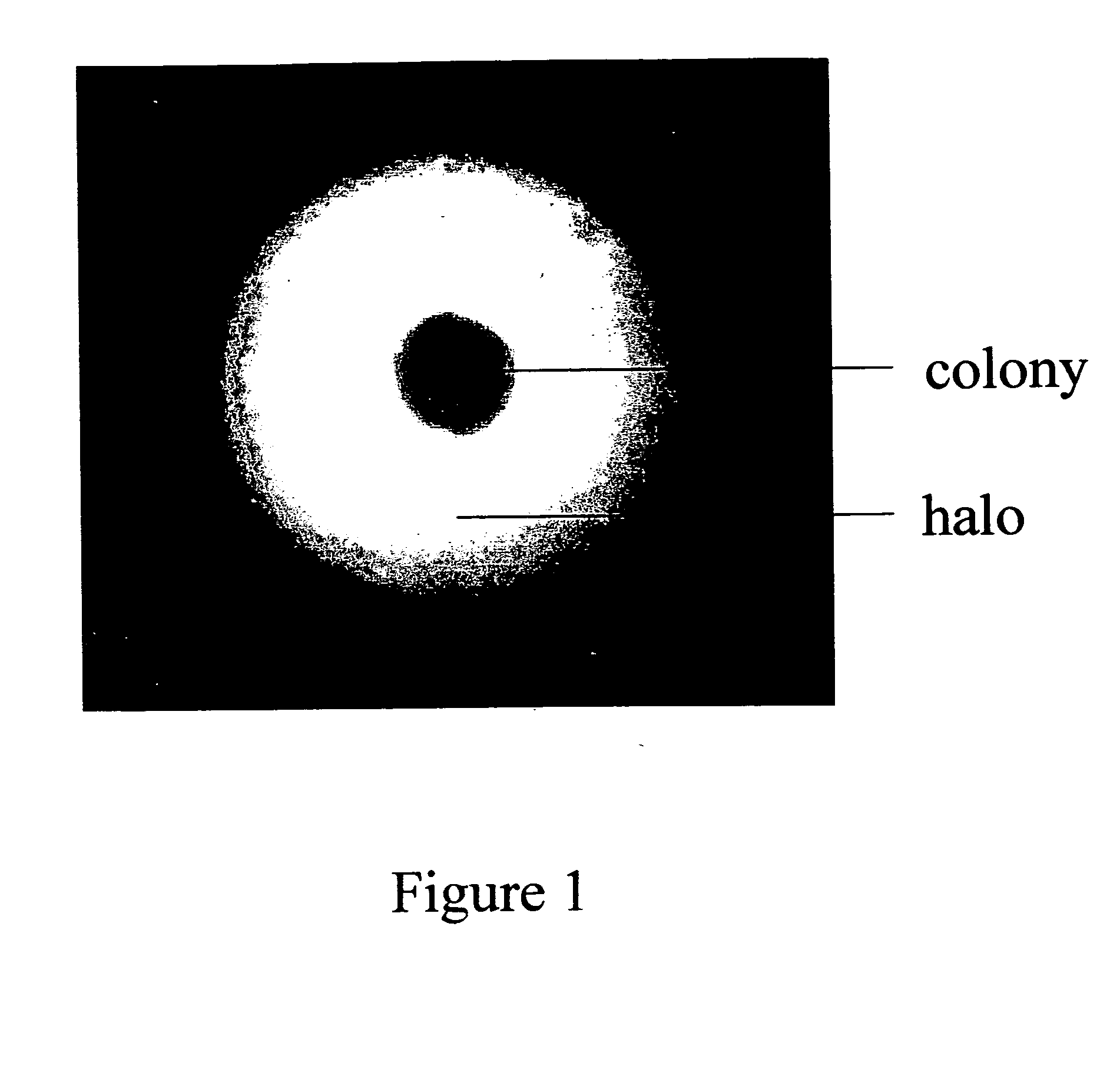Rapid way to obtain high expression clones of mammalian cells using a methylcellulose and immunoprecipitation screening method
a technology of immunoprecipitation and methylcellulose, which is applied in the field of gene screening methods, can solve the problems of poor growth of mammalian cells, time-consuming and laborious process, and one of the rate-limiting procedures for screening for high producers, and achieve the effect of high throughput screening
- Summary
- Abstract
- Description
- Claims
- Application Information
AI Technical Summary
Benefits of technology
Problems solved by technology
Method used
Image
Examples
example 1
Preparation of Methylcellulose Based Semi-Solid Capture Medium with Capture Antibody
[0095] Pre-made semi-solid matrix (4000 cps) containing methylcellulose in growth medium such as IMDM, EMDM, CD CHO, CD Hybridoma are commercially available. For example, Methocult from StemCell Technologies was used in the following experiments. The semi-solid capture medium was prepared by adding 1 ml capture antibody (2 mg / ml) to 13 ml methylcellulose medium. Antibiotic reagent and cell suspension were added to the mixture along with FBS, L-glutamine and additional growth medium to make 20 ml of final volume. In this example, the final concentration of the components are 1% methylcellulose, 30% FBS and 2 mM L-glutamine. It is readily understood that other concentrations suitable for the specific cell line are within the scope of this invention.
[0096] This working mixture was placed in a proper container (such as a 50 ml conical centrifuge tube) and mixed or vortexed vigorously for 30 seconds. Af...
example 2
Transfection and Initial Selection of Myeloma Cells Using Antibiotics
[0098] Murine myeloma Sp2 / 0 derived cell line C463A was transfected with chimeric anti-TNF antibody cA2 expression plasmids by electroporation as described by Knight et al.
[0099] In brief, the expression plasmid for cA2 heavy chain was linearized by digestion with XhoI and the expression plasmid for cA2 light chain was linearized using KpnI restriction enzyme. 10×106 C463A cells were transfected with about 10 μg of linearized plasmid by electroporation (200V and 1180 uF). Following the electroporation, the cells were plated in T-75 flasks for 72 hours. After recovery, cells were selected with 0.5 μg / ml mycophenylic acid for 2-5 passages.
example 3
Colony Formation and Halo Detection in Methylcellulose Based Semi-Solid Capture Medium
[0100] Transfected cells from the antibiotic selected culture were plated in methylcellulose based semi-solid capture medium in 6-well plates at 1-3×103 cells per well. The rabbit anti-human IgG (H&L) antibody was purchased from Jackson ImmunoResearch Laboratories, Inc. This capture antibody recognizes the chimeric anti-TNF cA2 mAb used in the experiment and has been used in Nephelometry for IgG quantitation.
[0101] In this assay, the capture antibody was incorporated to the methylcellulose based semi-solid capture medium at the final concentration of 1 mg / ml. The cultures in semi-solid methylcellulose capture medium were incubated at 37° C., 5% CO2 and >95% humidity without disturbance for 7-10 days before examination for colony and precipitate halo formation. The multiplication of cells was observed within 20 to 24 hours after plating and colonies were formed within 10 days.
[0102] Precipitates ...
PUM
| Property | Measurement | Unit |
|---|---|---|
| concentration | aaaaa | aaaaa |
| diameter | aaaaa | aaaaa |
| diameter | aaaaa | aaaaa |
Abstract
Description
Claims
Application Information
 Login to View More
Login to View More - R&D
- Intellectual Property
- Life Sciences
- Materials
- Tech Scout
- Unparalleled Data Quality
- Higher Quality Content
- 60% Fewer Hallucinations
Browse by: Latest US Patents, China's latest patents, Technical Efficacy Thesaurus, Application Domain, Technology Topic, Popular Technical Reports.
© 2025 PatSnap. All rights reserved.Legal|Privacy policy|Modern Slavery Act Transparency Statement|Sitemap|About US| Contact US: help@patsnap.com


